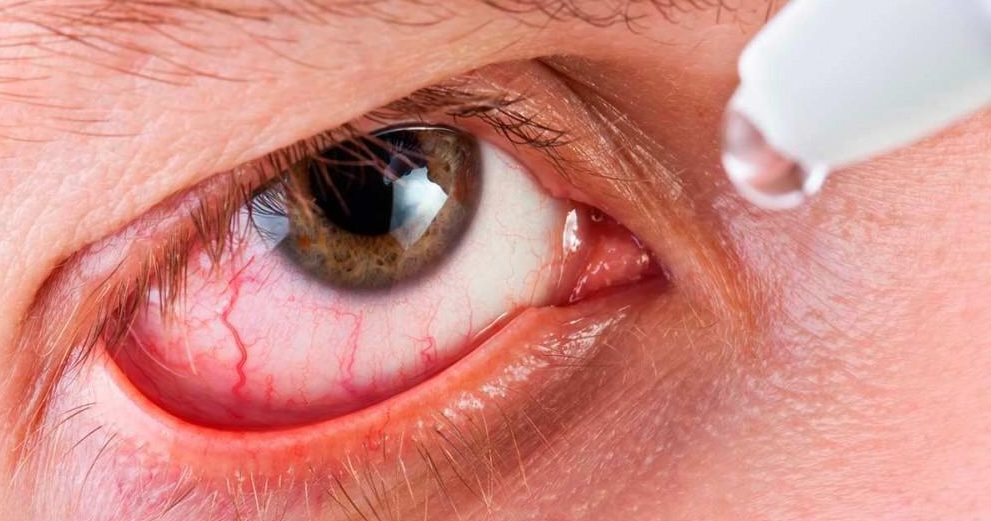Dry eye is a common condition that occurs when your eyes don’t produce enough tears or when the tears evaporate too quickly. This can lead to discomfort, irritation, and even vision problems if left untreated. Dry eye affects people of all ages but is particularly prevalent in older adults and those who spend long hours in front of screens or in dry environments.
In this blog post, we’ll explore the causes, symptoms, and treatments for dry eye to help you better understand and manage this condition.
What Is Dry Eye?
Dry eye, or dry eye syndrome, happens when the eyes lack sufficient moisture. Tears play a vital role in keeping the surface of the eye lubricated, clear, and free from infection.
Dry eye occurs due to:
- Reduced Tear Production: The tear glands (lacrimal glands) don’t produce enough tears.
- Increased Tear Evaporation: Tears evaporate too quickly, often due to environmental factors or issues with the tear film.
The tear film itself has three layers:
- Oil Layer: Prevents evaporation.
- Water Layer: Provides hydration.
- Mucus Layer: Helps tears spread evenly over the surface of the eye.
Disruption in any of these layers can lead to dry eye symptoms.
What Causes Dry Eye?
Dry eye can result from a variety of factors, including:
1. Environmental Factors
- Windy, dry, or dusty climates
- Air conditioning, heating, or fans
- Prolonged screen time (reduces blinking rate)
2. Age and Hormonal Changes
- Natural aging reduces tear production.
- Hormonal changes during menopause or pregnancy.
3. Medical Conditions
- Autoimmune diseases like Sjögren’s syndrome, rheumatoid arthritis, or lupus.
- Thyroid disorders or diabetes.
- Inflammation of the eyelids (blepharitis) or meibomian gland dysfunction.
4. Medications
- Antihistamines
- Antidepressants
- Decongestants
- Birth control pills
5. Lifestyle Choices
- Smoking or exposure to smoke.
- Poor hydration or nutrition, particularly diets low in omega-3 fatty acids.
Symptoms of Dry Eye
The symptoms of dry eye can vary in intensity but may include:
- A gritty or sandy feeling in the eyes.
- Redness or inflammation.
- Burning, itching, or stinging sensations.
- Sensitivity to light (photophobia).
- Blurred or fluctuating vision.
- Excessive tearing (a reflex response to dryness).
- Difficulty wearing contact lenses.
Diagnosing Dry Eye
If you suspect you have dry eye, an eye doctor can perform specific tests to diagnose the condition:
- Tear Breakup Time (TBUT): Measures how quickly tears evaporate.
- Schirmer Test: Measures tear production with a small strip of paper.
- Ocular Surface Staining: Identifies damage to the eye’s surface.
- Meibography: Examines the health of the meibomian glands.
How to Treat Dry Eye
The treatment for dry eye depends on its underlying cause and severity.
1. Artificial Tears
Over-the-counter lubricating eye drops can provide temporary relief by supplementing natural tears.
2. Prescription Medications
- Anti-inflammatory Drops: Such as cyclosporine (Restasis) or lifitegrast (Xiidra).
- Steroid Drops: For short-term relief of severe inflammation.
3. Lifestyle and Environmental Adjustments
- Take frequent breaks during screen time to blink more often.
- Use a humidifier to add moisture to the air.
- Wear wraparound sunglasses to protect your eyes from wind and dust.
4. Warm Compresses
Applying a warm compress to the eyes can help unblock meibomian glands and improve tear quality.
5. Nutritional Supplements
- Omega-3 fatty acids, found in fish oil or flaxseed oil, may improve tear production and reduce inflammation.
6. Medical Procedures
- Punctal Plugs: Small devices inserted into the tear ducts to reduce tear drainage.
- Lid Hygiene Treatments: Professional cleaning of the eyelid margins.
- Intense Pulsed Light (IPL): Can improve meibomian gland function.
Preventing Dry Eye
While not all cases of dry eye can be prevented, these tips can help reduce your risk:
- Blink consciously, especially when using screens.
- Stay hydrated by drinking plenty of water.
- Include foods rich in omega-3s, such as salmon, walnuts, and chia seeds, in your diet.
- Avoid smoky or windy environments.
- Use protective eyewear outdoors.
When to See a Optician
If your dry eye symptoms persist despite over-the-counter treatments or significantly impact your quality of life, consult an eye care professional. Chronic dry eye may require more advanced interventions to prevent complications like corneal damage or infection.
Final Thoughts
Dry eye is a manageable condition, but early recognition and consistent care are essential to maintaining comfort and eye health. By understanding the causes and treatments, you can take proactive steps to keep your eyes hydrated and healthy.
Book a home test today
Fill in the form to request a home eye test, and one of our team will be in touch
If you have any questions, please call us on
Our other blogs
